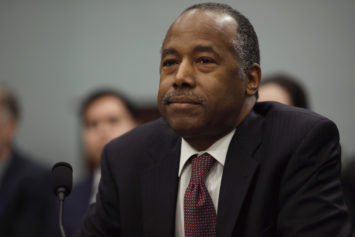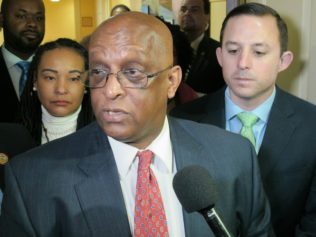In the wee hours of the morning on July 6, 2013, in the idyllic lakeside town of Lac-Mégantic in Quebec, Canada, something wasn’t right.
Hours earlier, the weary conductor of a 72-car freight train carrying crude oil from North Dakota had parked his massive caravan and checked into a hotel just west of the scenic tourist destination. Sometime around 1 a.m., as the town’s 6000 residents slept peacefully, the unattended train somehow began moving. After gaining momentum, the now missile-like locomotive didn’t stop until jumping the track near downtown Lac-Megantic and plummeting into the heart of the town center. The resulting series of catastrophic explosions claimed the lives of 47 people while wiping out over 30 buildings including the town’s library, archives and a bar filled with dozens of partygoers. Most of the 39 buildings left standing were subsequently demolished due to oil contamination of their underlying grounds.
As horrific and extraordinary as the Lac-Mégantic disaster was, the same thing could happen in Baltimore — except worse.
Each week, CSX Transportation moves up to five trains on freight lines through the city, each carrying over a million gallons of highly flammable crude oil. In the event of a major accident or derailment, there would be a direct impact upon the estimated 165,000 people residing within a mile of the tracks.
“I had no idea what the dangers were and I live very close to the railroad tracks where these old trains come across,” says Ann Robinson, president of the Mount Winans Community Association. She was unaware of the threat posed to her South Packer Street home — which sits in the small rail-side community, a mere 30 yards from the tracks — until informed by environmental advocates, the Chesapeake Climate Action Network (CCAN), back in 2014.
“That’s why I got involved,” says Robinson, “to really let the community residents know the impact of what would happen if one of those trains derailed in our neighborhood.”
Others want to assure Baltimore’s trackside communities that the transport process is secure. “Safety is CSX’s highest priority,” CSX spokesman Rob Doolittle said in a recent statement. “And that includes the safety of the communities where we operate, our customers and our employees.”
The transit company reportedly employs a sophisticated routing analysis tool to determine the safest routes for its shipments. Still, members of those communities in the blast zones — areas directly impacted by a potential catastrophe — feel far less secure than Doolittle.
“The blast zone runs right alongside one of the main roads in our community, which is residential, and would put a lot of homes unnecessarily at risk,” says Charles Graham, a youth leader in Baltimore’s Curtis Bay neighborhood and member of the human rights organization United Workers. Prior to his involvement with the oil train issue, the 21-year-old was instrumental in the successful movement to stop the construction of what would’ve been the nation’s largest trash-burning incinerator near his community.
The situation is further exacerbated, says Graham, by the city “not having, or claiming to not have” the resources to adopt the safety measures needed “to not have those homes at risk.”
The risk is far from unfounded. The recent increase in oil fracking in the Bakken shale fields of North Dakota has greatly increased domestic oil train traffic, along with its potential for accidents. In April 2014, 10 cars of a train derailed and exploded in Lynchburg, Va., dumping over 30,000 gallons of Bakken crude oil and engulfing the James River in flames. Between February 2015 and June 2016, nine trains bearing crude jumped their tracks, resulting in disasters across the country.
Just over a year ago, on June 13, 2016, 13 cars of a 124-car CSX Transportation freight train derailed at Baltimore’s Howard Street Tunnel. All but one of the derailed cars were empty. However, that one unit carried the highly flammable substance acetone, while the units that did not derail also contained similarly combustible materials. Fortunately, none of the materials ignited.
However, it was more justification for those community groups and environmental activists unhappy with the threats posed to their communities and who, back in 2014, had already challenged a proposal by the Texas-based company, Targa, to construct an oil train terminal in South Baltimore. Though the community mobilization was successful, during the process it was revealed that crude oil trains were already traveling through the city to an existing terminal in Fairfield that few knew about since such information is not commonly made public.
As a result, there was a push by concerned groups in 2016 to introduce a bill in the City Council requiring health impact and risk assessments of the trains. Ultimately, the bill failed to make it out of committee, causing Baltimore City Councilwoman Mary Pat Clarke in November to lament, “I don’t want to be sitting here when something happens and we didn’t do everything we could possibly do to prevent it.”
“It seems like the only time anything happens is when there is a disaster and I’m just hoping that the lobbying we do and the reaching out to leadership in the city and the state will bring about a change,” says Robinson, noting the alternative “will be too late.” Robinson and other activists are currently working with City Council members to introduce a new bill.
But beyond the crude trains, proposed incinerators and countless other environmental hazards that cross his Baltimore community, Graham presents a bigger vision.
“One big issue we kept running up against was this idea we need these kind of industries to stimulate some kind of wealth in our communities, creating this false narrative that we need to pick jobs over our health or the other way around,” says Graham, noting the “overburdened” nature of his Curtis Bay community in terms of environmental hazards and air pollution. But, he continues, “there are many alternatives to this, like actual renewable energy or green jobs that don’t put our health at risk.
“The Baltimore I envision would be one that acknowledges that people’s lives are more important than profit.”


